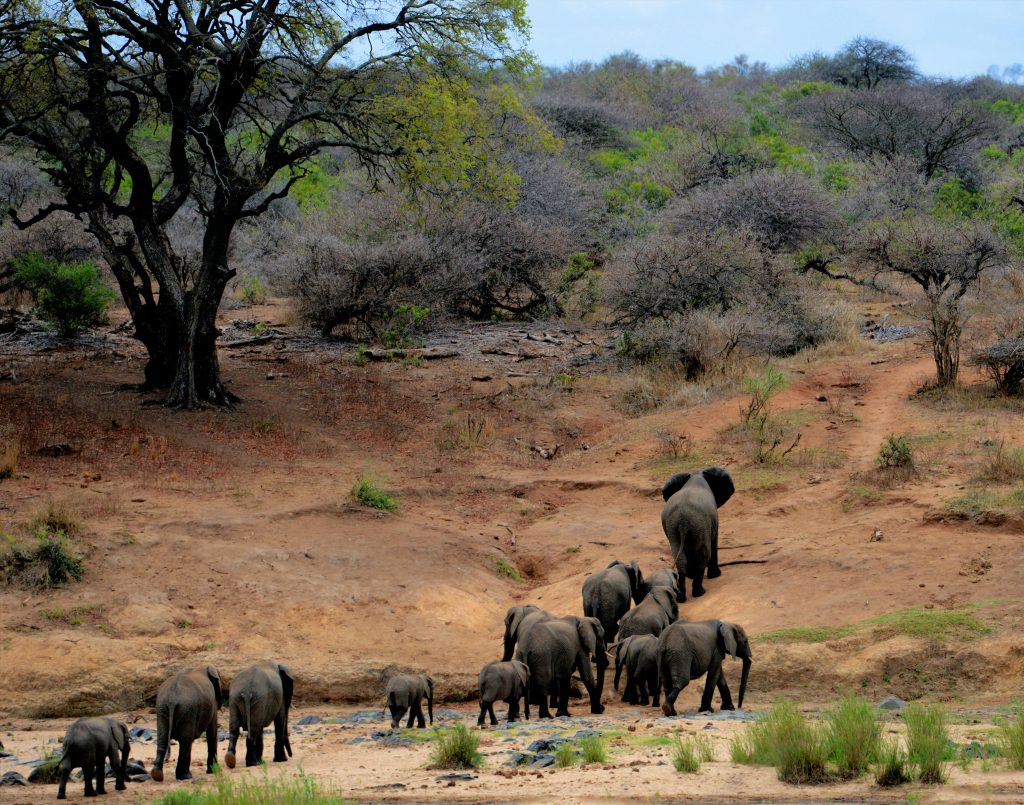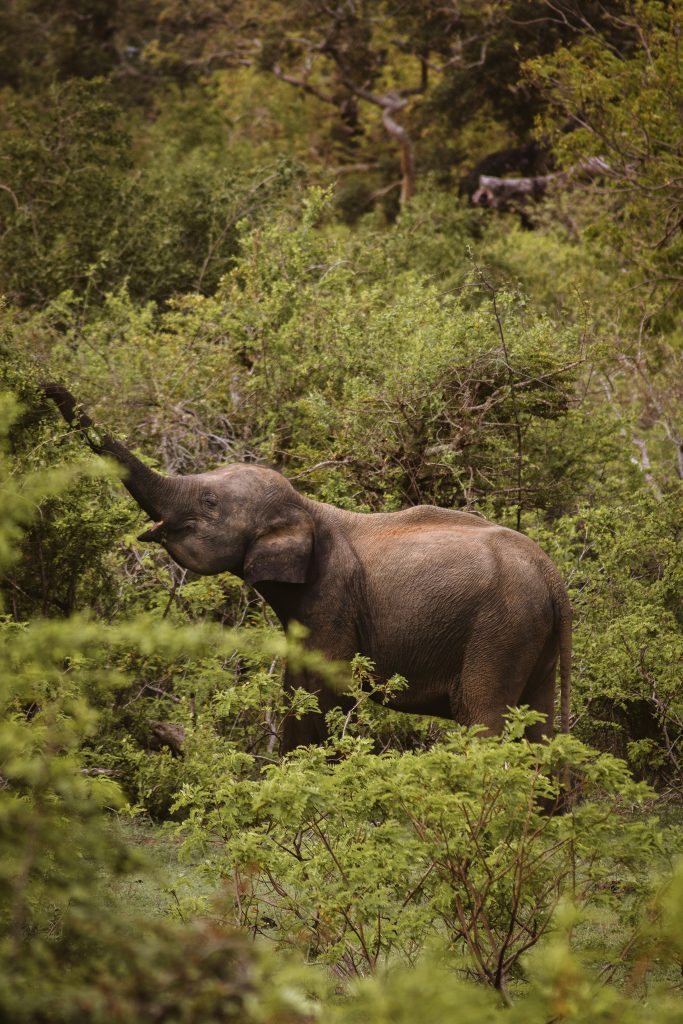Udawalawa
Udawalawa, nestled in the heart of Sri Lanka, unfolds as a captivating destination that beckons nature enthusiasts and adventurers alike. This article embarks on a journey to explore the wonders of Udawalawa, providing a brief overview that encapsulates its charm and significance within the rich tapestry of Sri Lanka.
Udawalawa stands as a testament to Sri Lanka’s commitment to preserving its natural heritage, with its crown jewel being the Udawalawe National Park. This sanctuary plays a pivotal role in the country’s conservation efforts, offering a haven for diverse wildlife displaced during the construction of the Udawalawe Reservoir.
As we delve into the lush landscapes and open expanses of Udawalawa, a teaser awaits – a promise of encountering a myriad of species in their natural habitat. Elephants, the gentle giants of Udawalawa, take center stage, complemented by the graceful presence of sambar deer, the rugged wild buffalo, and the stealthy crocodiles. The landscapes are a canvas painted with varied hues, providing an immersive experience for those eager to explore the untamed beauty of Sri Lanka.
Join us as we unravel the mysteries of Udawalawa, where every corner tells a story of conservation, biodiversity, and the harmonious coexistence of nature’s wonders.

Udawalawe National Park: A Biodiversity Hotspot
In the embrace of Udawalawa lies the Udawalawe National Park, a living testament to Sri Lanka’s commitment to preserving its natural treasures. Let’s delve into the historical tapestry of this sanctuary, explore the vast expanse it encompasses, and understand the pivotal role it plays in the realm of conservation and biodiversity.
Historical Background and Establishment:
Udawalawe National Park’s story unfolds against the backdrop of a historical imperative. Established in 1972, the park emerged as a sanctuary for wildlife displaced during the construction of the Udawalawe Reservoir. This foresighted initiative aimed not only to provide a new home for the displaced fauna but also to create a haven where nature could thrive undisturbed.
Overview of Udawalawe National Park’s Vast Expanse:
Spanning an expansive 30,821 acres, Udawalawe National Park is a sprawling canvas of diverse landscapes. From open grasslands to dense forests and tranquil wetlands, the park’s varied terrain provides a habitat for an impressive array of flora and fauna. Its strategic location, nestled in the southern part of Sri Lanka, ensures that it remains a hotspot for biodiversity enthusiasts and nature lovers.
Importance of the Park for Conservation and Biodiversity:
Udawalawe National Park plays a crucial role in the conservation efforts of Sri Lanka. Serving as a haven for a multitude of species, the park contributes significantly to the preservation of the country’s rich biodiversity. Beyond its role in safeguarding displaced wildlife, the park serves as an educational hub, fostering awareness about the importance of coexisting with nature and protecting the delicate balance of ecosystems.
As we step into the realm of Udawalawe National Park, we enter a sanctuary where history, nature, and conservation converge to create a haven for the wild. Join us in the next section as we uncover the wildlife wonders that make Udawalawe truly extraordinary.
Wildlife Wonders in Udawalawa
Venturing into Udawalawa is an invitation to witness a spectacular showcase of Sri Lanka’s untamed beauty. The Udawalawe National Park, a sanctuary of wonders, boasts a diverse array of wildlife, each species contributing to the vibrant tapestry of this natural haven.
Highlighting the Prominence of Elephants in the Park:
Udawalawa is synonymous with the majestic presence of elephants. The park is home to a thriving population of these gentle giants, and their prominence is a defining feature of the Udawalawe landscape. Whether grazing peacefully in the grasslands or playfully bathing in waterholes, the elephants of Udawalawa offer a captivating spectacle, making each encounter a truly memorable experience.
Other Key Wildlife Species: Sambar Deer, Wild Buffalo, Crocodiles:
Beyond the regal elephants, Udawalawa unfolds a gallery of other remarkable wildlife. The graceful sambar deer, with their majestic antlers, navigate the park’s landscapes, adding a touch of elegance to the scenery. Wild buffalo, rugged and robust, graze in the open grasslands, embodying the untamed spirit of Udawalawa. Along the waterways, the stealthy presence of crocodiles completes the ensemble, showcasing the diversity of habitats within the park.
The Role of Jeep Safaris in Wildlife Exploration:
Exploring the depths of Udawalawe National Park is a thrilling adventure, and the jeep safari stands as the key to unlocking its treasures. Jeep safaris offer visitors the opportunity to traverse the park’s varied terrains, from dense forests to expansive grasslands, ensuring a close encounter with the resident wildlife. Expert guides navigate through the landscape, providing insights into the behaviors and habitats of Udawalawa’s diverse fauna, making the safari an immersive and educational experience.
As we immerse ourselves in the wildlife wonders of Udawalawa, the next section will unveil the avian paradise that further enriches the biodiversity of this exceptional sanctuary.
Avian Paradise: Udawalawe’s Birdlife
As we continue our exploration of Udawalawa, we uncover a hidden treasure for bird enthusiasts. Udawalawe’s avian paradise unfolds around the Udawalawe Reservoir, creating a haven for a rich diversity of birdlife that adds melody and color to the natural symphony of this Sri Lankan sanctuary.
The Significance of Udawalawe Reservoir for Birdwatching:
The Udawalawe Reservoir, a shimmering expanse of water at the heart of the national park, serves as a vital lifeline and a haven for a myriad of bird species. Its significance lies not only in providing sustenance for the park’s inhabitants but also in creating an ideal environment for birdwatching. The reservoir’s shores and surrounding vegetation offer prime locations for enthusiasts to observe and appreciate the winged wonders that call Udawalawa home.
Notable Bird Species Found in the Park:
Udawalawe is a birdwatcher’s paradise, boasting a diverse array of both resident and migratory species. The park’s wetlands attract water-loving birds such as storks, herons, and kingfishers. The open grasslands are frequented by raptors like eagles and hawks, showcasing the park’s varied habitats. Visitors may also encounter vibrant flocks of parakeets and the occasional sighting of elusive owls in the park’s wooded areas.
The Appeal of Udawalawa for Bird Enthusiasts:
For those passionate about birds, Udawalawa offers a unique and enriching experience. The open landscapes and abundant water sources make it an ideal habitat for a wide variety of bird species. The park’s commitment to conservation ensures that these feathered inhabitants continue to thrive in their natural environment, creating a captivating spectacle for birdwatchers who seek solace and connection with nature.
As we marvel at the avian wonders of Udawalawa, the next section will delve into the delicate balance between conservation initiatives and sustainable tourism, ensuring the longevity of this natural paradise.
Conservation Initiatives and Sustainable Tourism
In the delicate dance between preserving natural wonders and sharing them with the world, Udawalawa stands as a shining example of successful conservation and sustainable tourism. Let’s delve into the strategies employed to maintain the ecological balance of this sanctuary while offering visitors an opportunity to connect with its unique biodiversity.
Balancing Conservation Efforts with Tourism:
Udawalawa National Park exemplifies the delicate balance between conservation and tourism. Recognizing the importance of both, authorities have implemented measures to ensure that the influx of visitors does not compromise the park’s ecological integrity. By establishing designated trails, limiting the number of vehicles, and enforcing strict guidelines, Udawalawa strives to provide a memorable yet environmentally responsible experience for tourists.
Ongoing Initiatives for the Preservation of Udawalawa’s Ecosystems:
The commitment to preserving Udawalawa’s ecosystems extends beyond mere rhetoric. Ongoing initiatives focus on habitat restoration, wildlife monitoring, and research to better understand the park’s complex ecological dynamics. The creation of buffer zones and the implementation of sustainable land-use practices contribute to the overall health of the park, ensuring that future generations can continue to witness the wonders of Udawalawa.
Responsible Tourism Practices and Their Impact on the Park:
Tourism, when approached responsibly, can be a powerful force for conservation. In Udawalawa, responsible tourism practices are paramount. Visitors are educated about the fragility of the ecosystem, with an emphasis on maintaining a respectful distance from wildlife and adhering to designated pathways. These practices not only minimize the ecological footprint of tourism but also foster a sense of environmental stewardship among those who explore the wonders of Udawalawa.
As we consider the delicate equilibrium between human exploration and environmental preservation, the next section will guide potential visitors on how to responsibly experience the marvels of Udawalawa National Park.

Visitor’s Guide: Exploring Udawalawa
Embarking on a journey to Udawalawa promises an unforgettable adventure in the heart of Sri Lanka‘s natural wonders. This section serves as your comprehensive guide, providing practical information, highlighting recommended activities, and offering valuable tips to ensure a rewarding experience as you explore the enchanting landscapes of Udawalawa National Park.
Practical Information for Planning a Visit:
Entrance and Permit: Obtain necessary permits at the park’s entrance. It’s advisable to check the park’s official website for the latest information on fees and entry requirements.
Best Time to Visit: Plan your trip during the dry season (May to September) for optimal wildlife sightings.
Accommodations: Choose from a range of accommodations, including lodges and resorts, situated in proximity to the national park.
Recommended Activities and Experiences within the Park:
Jeep Safaris: Opt for a guided jeep safari to explore Udawalawa’s diverse landscapes. Knowledgeable guides enhance the experience by sharing insights into the park’s flora and fauna.
Birdwatching: Take advantage of Udawalawe Reservoir’s significance as a birdwatching hotspot. Binoculars and a keen eye will reward you with sightings of various avian species.
Nature Walks: Some areas of the park offer guided nature walks, allowing you to appreciate the smaller wonders of Udawalawa, from endemic plant species to insect life.
Tips for Maximizing Wildlife Sightings during a Udawalawa Adventure:
Early Mornings and Late Afternoons: Wildlife is often more active during these times. Plan your safaris during the early morning or late afternoon for the best chances of encountering animals.
Silence and Patience: Wildlife can be elusive. Practice patience, and maintain a quiet demeanor during safaris to avoid startling the animals.
Respect Wildlife Boundaries: Admire the animals from a safe distance. This not only ensures your safety but also minimizes disturbance to the park’s inhabitants.
Armed with this guide, you’re well-equipped to make the most of your Udawalawa adventure. As we move forward, we’ll explore the cultural context of Udawalawa, delving into its significance in Sri Lanka’s heritage.
The Cultural Context: Udawalawa in Sri Lankan Heritage
As we venture beyond the pristine landscapes and diverse wildlife of Udawalawa, it’s essential to understand the cultural context that intertwines with this natural sanctuary. Udawalawa holds a significant place in Sri Lanka’s rich heritage, connecting local communities, and playing a pivotal role in promoting environmental awareness.
Udawalawa’s Place in Sri Lanka’s Cultural and Natural Heritage:
Udawalawa isn’t merely a haven for wildlife; it is a living testament to the inseparable link between nature and Sri Lanka’s cultural heritage. The park’s establishment in 1972 was a nod to the country’s commitment to preserving its natural treasures. The harmonious coexistence of diverse ecosystems within Udawalawa reflects the deep-rooted respect Sri Lankans have for their environment, a sentiment passed down through generations.
Local Communities and Their Connection to the National Park:
Surrounding Udawalawa National Park are communities whose lives are intricately connected to the rhythms of nature. These residents understand the delicate balance between human activities and the well-being of the park. Their sustainable practices, from agriculture to tourism, showcase a harmonious coexistence that has been a hallmark of Sri Lankan village life for centuries. Engaging with these communities provides visitors with a unique opportunity to appreciate the cultural tapestry that envelops Udawalawa.
The Role of Udawalawa in Promoting Environmental Awareness:
Udawalawa plays a crucial role as an ambassador for environmental awareness in Sri Lanka. Through educational programs, guided tours, and community initiatives, the park fosters a sense of responsibility and environmental stewardship among visitors and locals alike. By showcasing the delicate interplay between humans and nature, Udawalawa inspires a deeper appreciation for the need to protect and conserve our planet’s precious resources.
As we conclude our exploration of Udawalawa’s cultural context, the final section will summarize the allure of this wildlife sanctuary and encourage readers to appreciate and protect the natural beauty of Udawalawa for generations to come.

Conclusion
In the heart of Sri Lanka’s enchanting landscapes, Udawalawa emerges as a wildlife sanctuary that captivates the soul and beckons adventurers into the embrace of nature’s wonders. As we conclude our journey through Udawalawa, it’s essential to reflect on the allure of this sanctuary, encourage responsible exploration, and champion the cause of protecting its natural beauty for the benefit of future generations.
Summarizing the Allure of Udawalawa as a Wildlife Sanctuary:
Udawalawa stands as a testament to the harmonious coexistence of diverse ecosystems, where open grasslands, dense forests, and tranquil wetlands converge to create a haven for an incredible array of wildlife. The prominence of elephants, the grace of sambar deer, and the stealth of crocodiles paint a vivid picture of nature’s beauty thriving undisturbed within the sanctuary.
Encouraging Readers to Explore the Wonders of Udawalawa Responsibly:
As we invite you to explore Udawalawa, we emphasize the importance of responsible tourism. By adhering to designated paths, maintaining respectful distances from wildlife, and embracing sustainable practices, visitors can ensure that the magic of Udawalawa endures without compromising its delicate balance.
A Call to Appreciate and Protect the Natural Beauty of Udawalawa for Future Generations:
Udawalawa is not just a destination; it’s a legacy that we pass on to the generations that follow. By fostering a deep appreciation for the sanctuary’s natural beauty, we become custodians of its ecological heritage. Let us pledge to protect Udawalawa, ensuring that future generations can marvel at the same wonders that have stirred our hearts during this exploration.
In the spirit of conservation and admiration for the wild, let Udawalawa be a living testament to the timeless bond between humanity and nature. As you embark on your own Udawalawa adventure, remember that in the footsteps of responsible exploration lies the key to preserving the sanctuary’s allure for the years to come.




